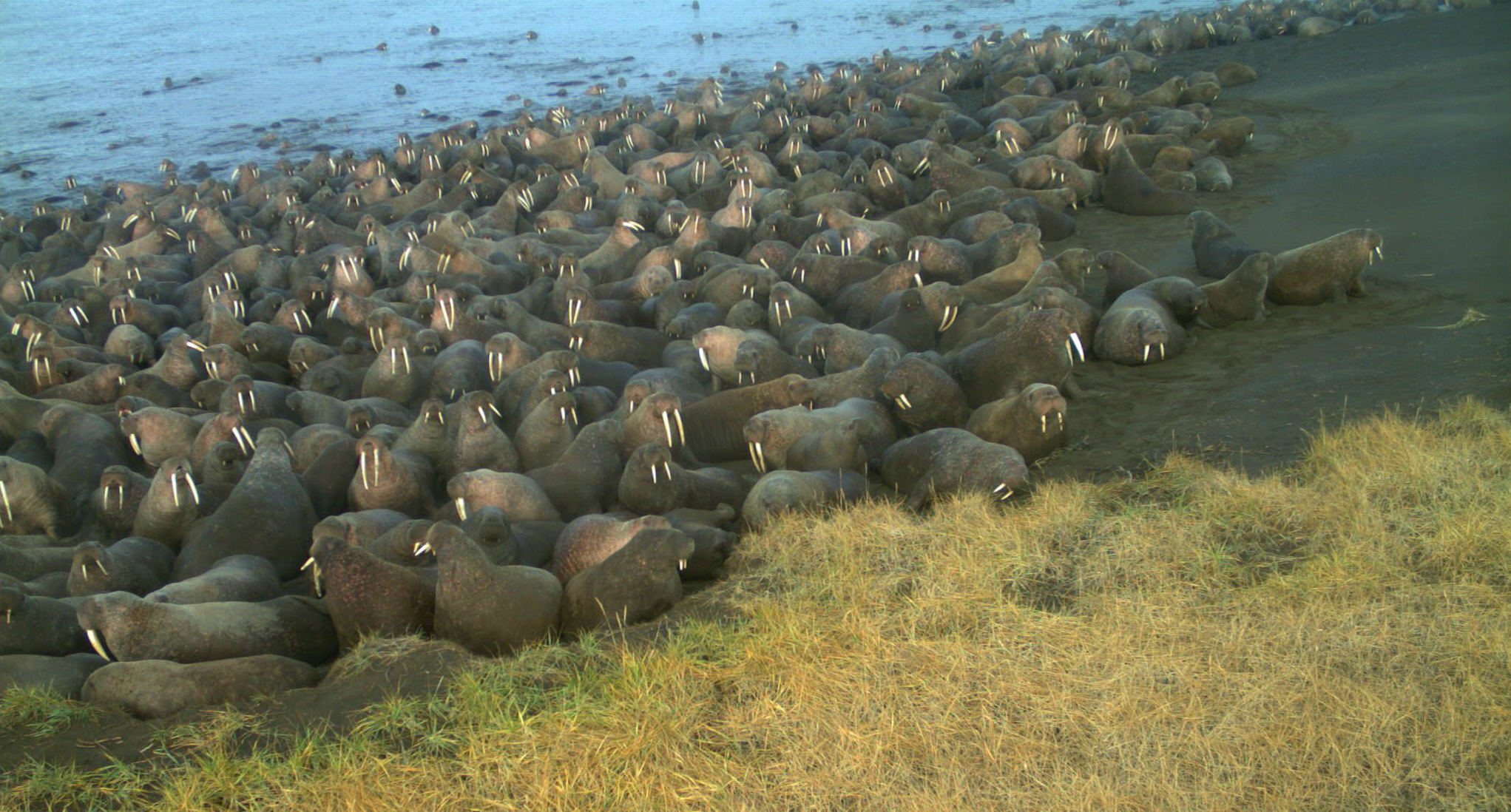Two pilots were fined for disturbing walruses crowded onto an Arctic Alaska beach
The fines appear to be the first issued for disturbing walruses hauled out on the Alaska Arctic beach – itself a relatively new phenomenon.

Two pilots have been fined for disturbing walruses by flying their small aircraft too close to a Chukchi Sea beach that, in the era of low Arctic sea ice, has become a regular late-season gathering spot for tens of thousands of Pacific walruses.
The pilots paid fines of $3,000 each for violations of the Marine Mammal Protection Act, the U.S. Fish and Wildlife Service reported on Tuesday. It appears to be the first time that Marine Mammal Protection Act citations have been issued for disturbances to walruses hauled out on the beach site near Point Lay, Alaska, said Andrea Medeiros, a spokeswoman for the service.
The incident happened in September of 2017 and was photographed by cameras installed at the haulout site, the Fish and Wildlife Service said. The service’s law enforcement agents used the time-stamped photographs to identify the aircraft and the pilots in it.
Almost every year since 2007 — which was, at the time, a record-low year for Arctic sea ice — walruses have been converging en masse at that beach site. Walruses generally use floating ice as platforms to rest between dives for food or to nurture their young. But with ice melted out of the Chukchi, the animals have had to go to shore. Crowded there, the walruses are distant from the best sites for food foraging, which are about 100 miles offshore. The size of the onshore crowds poses a hazard: If the walruses are frightened into a stampede, several could be trampled to death, and the youngest calves are the most vulnerable.
Because of the stampede risk, the Fish and Wildlife Service, the Point Lay tribal government and the Alaska Eskimo Walrus Commission have established guidelines for protecting the animals. Pilots and mariners are advised each summer to keep away from the beached walruses to avoid disturbances that could result in stampedes.
Under the Marine Mammal Protection Act, it is illegal to “take” any marine mammal without a permit. “Take” is defined as the harassment or attempted harassment, hunt, capture or killing or a marine mammal.
In the case of the cited pilots, whose names were not released by the Fish and Wildlife Service, the close-flying plane did provoke a reaction from the walruses, making the incident an unauthorized “take” of the animals, officials said.
“Time-lapse photographs taken by the trail cameras on site showed the aircraft flying low near the haulout and the animals leaving in response,” Medeiros said by email.
With Chukchi ice melting early and extensively this year, walruses began congregating at the Point Lay beach site in late July, earlier than at any time on record. The season’s first onshore walrus crowd was spotted on July 25; previously, the earliest-in-the-year onshore gathering there was in the first week of August in 2017.
The Point Lay walrus crowds, which are composed almost entirely of adult females and calves, have swelled this month. As of Sept. 21, there were about 40,000 of the animals gathered on the beach, Medeiros said.
There continue to be disturbance threats from air traffic in the area, she said. “We have received a couple of reports of low flying aircraft from Point Lay. We are currently following up on one of those reports,” she said by email.